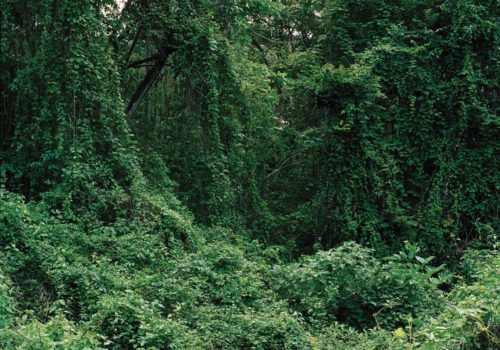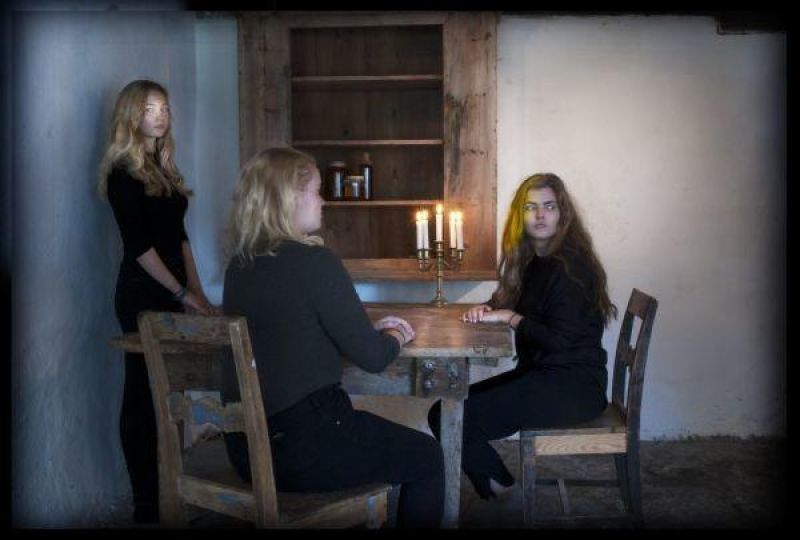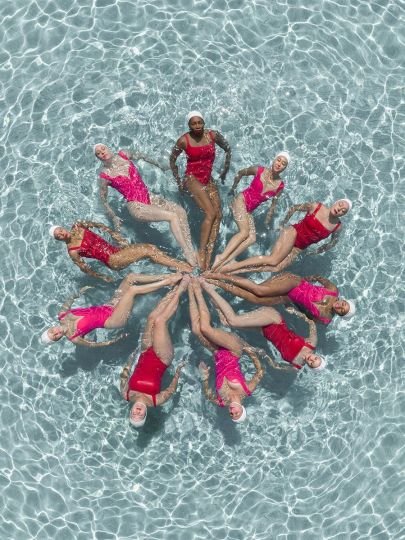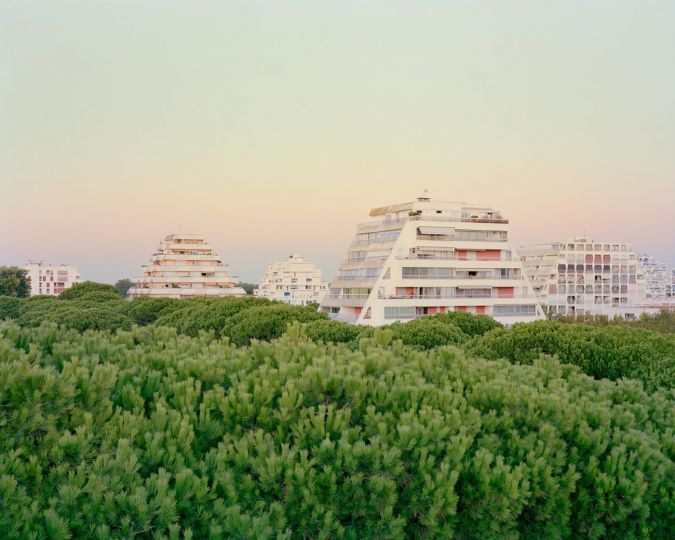There are silent photographs, those which pay tribute to nature, not to its thunderous sublimity, but to its simple and noble beauty, when its characters are torn for an instant from the brutal frenzy of their daily lives. This is the case for the photographs of Kevin Kunishi, whose works published by Daylight impose a gentle rhythm in opposition to the chaotic environment he studies. From the violence and disorder of Nicaragua, we have the haunting images of Susan Meiselas. What Kunishi captures today is a collection that is more subtle.
The image gallery which fills the first 60 pages opens onto a dense green jungle whose cascading vines suggest the entryway to an enigmatic world where tones of brown, green and yellow blend together. The portraits are filled with dramatic density, alternating between still lifes and landscapes. Unchanging, perhaps, as this dust-covered plastic rose seems to suggest by rising up timidly like the optimistic witness of thirty years history.
Laurence Cornet
———————————————————————————————–
Captions :
01 – Sandinista MI-24 Helicopter Crash Site, Between Pantasma and QuilalТ, 2010
02 – Pedrito, QuilalТ, 2010 (Contra)
“The first grenade hit and killed the guy in front of me. You could see his intestines. On the way out another grenade hit, blew me back, and cost me my sight. The dirt and smoke landed all around me.”
We stopped in a small village on our return from QuilalТ. That is where I met Pedrito. He described the explosion of the grenade, the ringing in his ears and the screaming all around him. He explained why he had taken up arms, how he had said goodbye to his family and crossed the Rio Coco to train in Honduras. Like most Contras, he took a code name to protect his loved ones at home.
03 – Raul’s Grenade, WiwilТ, 2010
U.S.-issued M67 fragmentation grenade unearthed after twenty years.
04 – Orange Tree, La Fundadora, 2010
05 – Charillo #003, Jinotega, 2010 (FSLN)
Charillo emerged from the brush, torn clothes and covered in dirt.
He looked me over and asked “American?”
“Yes,” I answered “How did you know?”
“When I would kill Contras they wore boots like yours.” He smiled and quickly wandered into the shoulder-high coffee plants that surrounded us.
He kept his distance, rarely coming into the house for dinner. He preferred to sit outside and watch me eat.
Later, I came to learn that he fought for four years in the jungle and was the lone survivor of his unit. After the war, homeless and destitute, he was found wandering the streets of Matagalpa. A fellow veteran named Antonio took him in to live with his family and work the farm.
Charillo sleeps on a wooden bed in the storage shed, surrounded by barrels of fertilizer and pesticide. We shared the same wall at night. I could hear him whispering to his newborn kittens and to people who now lived only in his imagination.
06 – Untitled, 2010
07 – Omar #006, Jinotega, 2010
08 – The Grave of Benjamin Linder, Matagalpa, 2010
Benjamin Linder was an American volunteer who was building a small hydro
09 – Cerro de los NЬmeros, Jinotega, 2010
A mountain, covered with foxholes, overlooking La Fundadora, the former plantation of Anastasio Somoza Debalye.
10 – Remigio, La Fundadora, 2009
His house was just up near the new coffee processing facility left inoperable due to the theft and sale of the most vital and expensive parts ! Remigio’s voice was a raspy whisper from the tracheotomy, his sentences broken by muffled gasps of air through the hole in his neck. He had been at La Fundadora since the times of Somoza. He talked of the free bottles of milk he used to receive in the morning, how Somoza would arrive in his beautiful bulletproof car, and how everything changed when the plantation was seized.
















